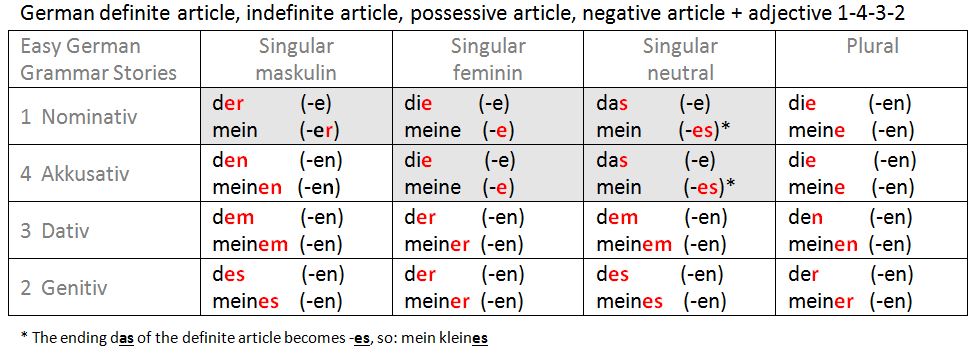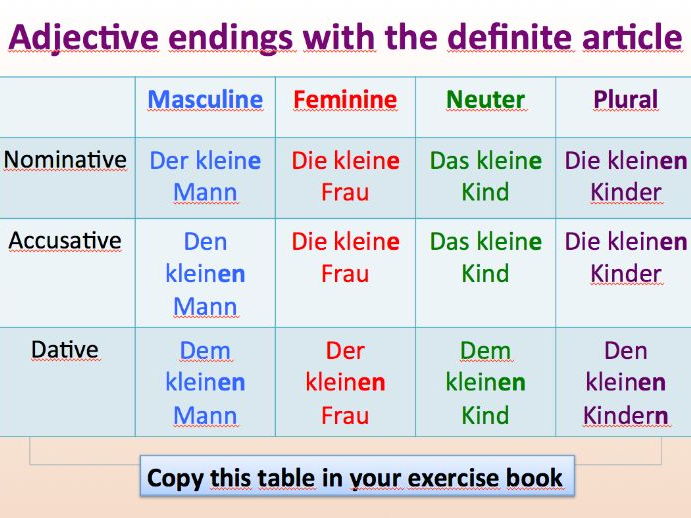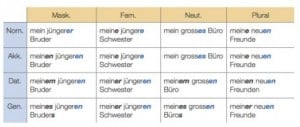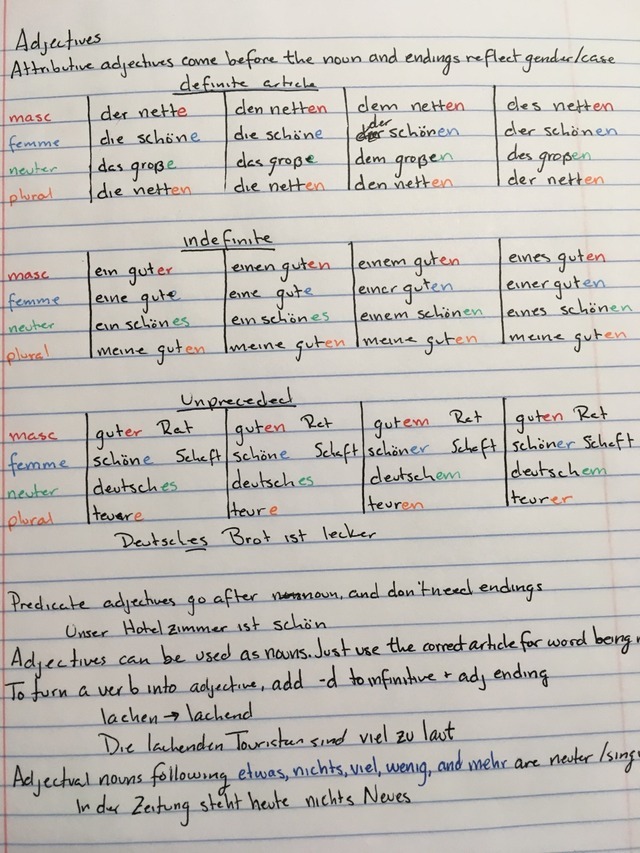German Adjective Ending Chart
German Adjective Ending Chart. There are four adjective endings in the German language: - -e - -en - -er - -es The Adjective Declination The adjective declination is a difficult grammar topic because you need to know the German cases and the articles. The masculine and neuter endings are the same for weak and.

All attributive adjectives -- that is, adjectives that precede a noun which they modify, must show declension, i.e. they must have an ending in German.
This table lists the various endings, in order masculine, feminine, neuter, plural, for the different inflection cases.
There must be an easier way to learn those endings. Well, as already mentioned, you can use these German adjective endings only for adjectives which describe a noun with a definite article. Der/das/die and Ein-word endings (including endings for the possessive adjectives mein, dein, sein, ihr, unser, euer) Mnemonic advice The ending - em is unique to dative singular.
Rating: 100% based on 788 ratings. 5 user reviews.
Donald Gearhart
Thank you for reading this blog. If you have any query or suggestion please free leave a comment below.












0 Response to "German Adjective Ending Chart"
Post a Comment